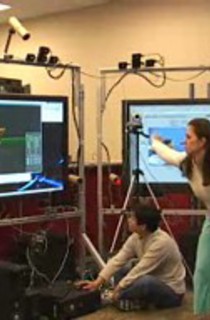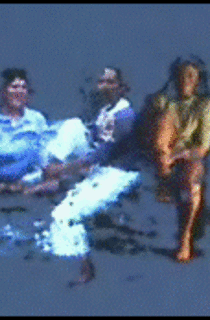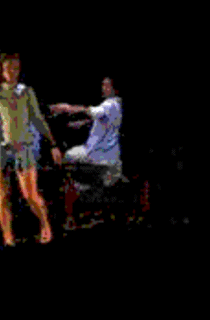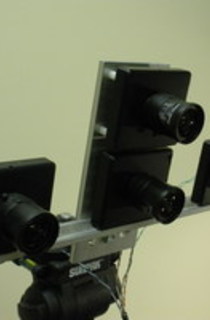Telepresence in Dance
When one thinks of telepresence, a plurality of images and visions come to mind from science fiction to computer-supported collaborative work. Klara Nahrstedt has been engaging with core issues in media transport through a long term research endeavor.
This is an exemplary continuing long term effort across several years of ACM MM Arts, there is WAY more work than what this one link holds.
http://www.aaai.org/Library/Symposia/Spring/2008/ss08-03-009.php
When one thinks of telepresence, a plurality of images and visions come to mind from science fiction to computer-supported collaborative work. And for Klara Nahrstedt, the problem is larger than bandwidth optimization and streaming. In a long term endeavor, her work’s goal is to engage with what it means to communicate over distance through modern dance. This requires a team of scientists, technologists, choreographers and dancers working together, in an attempt codify body movements that express feelings and concepts into multimedia based signals. The Telepresence in Dance project considers, through this exemplary multidisciplinary collaboration, what actually needs to be communicated, how can we represent the signal that is dance and transmit it over distance and, along the way, how the imperfections in media transport can be actually choreographed for meaning and creative endeavors.
Tele-immersive Environment for Everybody
The dancers meet in the tele-immersive environment where the 3D representation of their motion is captured in real time, streamed and rendered in a shared virtual space. The process does not require the dancers to wear any special device allowing continuous creative impulses.
The coordination requires one dancer to take the lead while the other follows by appropriate movement. Throughout the experiment, the dancers are dancing at various motion rates to evaluate how well the collaborative dancing is supported with the current technical boundary. Meanwhile, our multidisplay system helps the dancers to conveniently view from arbitrary angle and coordinate their body movements.
No comments yet. Why not add the first?
Acknowledgements & Credits
- Professor Klara Nahrstedt, Research group MONET, Computer Science Department, UIUC
- Professor Ruzena Bajcsy, Berkeley Center for Information Technology Research in the Interest of Society (CITRIS)
- Professor Peter Bajcsy, Research group ISDA, National Center for Supercomputing Applications, UIUC
- Renata Sheppard, Department of Dance, UIUC
- Professor Katherine Mezur, Departments of Dance, Mills College
- Professor Lisa Wymore, Berkeley Department of Theater, Dance, and Performance Studies, UC Berkeley
- Gregorij Kurillo, CITRIS tele-immersion, UC Berkeley
- Ross Diankov, CITRIS, UC Berkeley
- Samuel Johnston, CITRIS, UC Berkeley
- Arthur Yeap, CITRIS, UC Berkeley
- Zhenyu Yang, MONET, Computer Science Department, UIUC
- Muyuan Wang, MONET, Computer Science Department, UIUC
- Wanmin Wu, Computer Science Department, UIUC
- Hossein Mobahi, MONET, Computer Science Department, UIUC
- Dongyun Jin, MONET, Computer Science Department, UIUC
- Roger Cheng, MONET, Computer Science Department, UIUC
- Ravishankar Sathyam, MONET, Computer Science Department, UIUC
- Jin Liang, MONET, Computer Science Department, UIUC
- Bin Yu, MONET, Computer Science Department, UIUC
- Jigar Doshi, MONET, Computer Science Department, UIUC
- Miles Johnson, ISDA, Aerospace Department, UIUC
More information at http://isda.ncsa.uiuc.edu/teleimmersiveSpace/dance.html




← Back to work
0 Comments